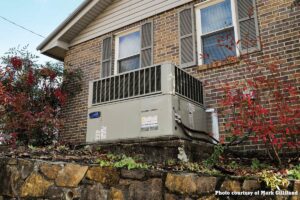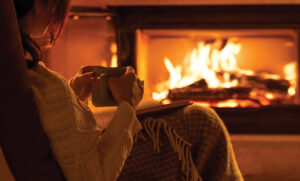Winterizing is an important step to keep your home cozy and your bills low. These tried-and-true methods will ensure your home is ready for colder weather.
Insulating
By insulating your home’s water pipes, you can raise the water temperature inside the pipes by 2 to 4 degrees, according to the U.S. Department of Energy (DOE). This allows you to turn down the heat on your water heater, saving energy and money.
Start by insulating the pipes coming out of the water heater. If you have a gas water heater, keep pipe insulation at least 6 inches away from the flue. Insulate hot and cold lines. The latter can prevent condensation and freezing pipes. Insulating your water heater can save 7 to 16 percent on water-heating costs, DOE says. Insulation kits are available at hardware stores. Don’t obstruct the pressure relief valve, thermostats or access valves.
Air sealing
Air sealing and insulation are a great combination for minimizing home energy use. Insulation is like a warm sweater for your home, and air sealing is the windbreaker. All cracks, gaps and holes in a typical home can be like having a window open. Air sealing eliminates those leaks. You can do it yourself or hire a professional.
Window sealing
Windows can be a source of drafts and wasted energy. Close windows tightly. Add weatherstripping around them to prevent warm air from escaping your home. Caulk the gaps where the window trim meets the wall and window frame. Add curtains to make the room feel warmer.
Storm windows are a lower-cost option for upgrading single-pane windows. They are available with low-emissivity coatings, which insulate better, and are available for installation either from the inside or outside.
Fireplace dampers
When I was little, my dad told me it was too cold to have a fire. I remember thinking that made no sense, but he was right.
We had an open, wood-burning fireplace—not a wood stove. A fireplace can draw the warm air out of the house, cooling it down or causing your heating system to use more energy.
Your fireplace adds ambiance to your home but isn’t necessarily effective at heating it. If you have a wood-burning fireplace, close the damper when your fire is extinguished. An open damper in the winter is an easy exit for the air you paid to heat.
Adding tempered glass doors to a wood-burning fireplace can create an extra buffer between the cold outside and a cozy living space.
Some gas fireplaces require a damper to remain permanently open so gas can vent out of the home. Check the specifications of your unit to ensure safe operation.
Check filters
Maintaining a clean filter in your furnace is one of the best ways to keep it running efficiently and prevent costly repairs. Check your furnace or ductless heat pump filter monthly during peak heating season.










